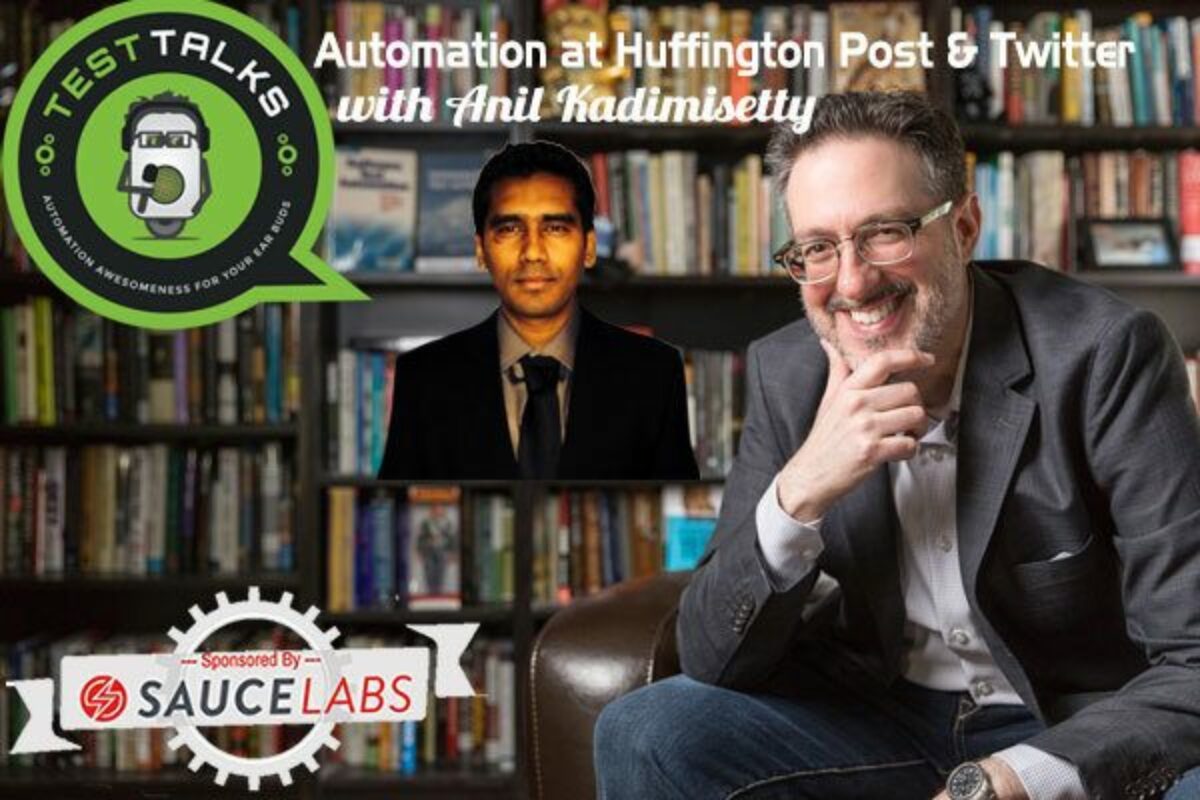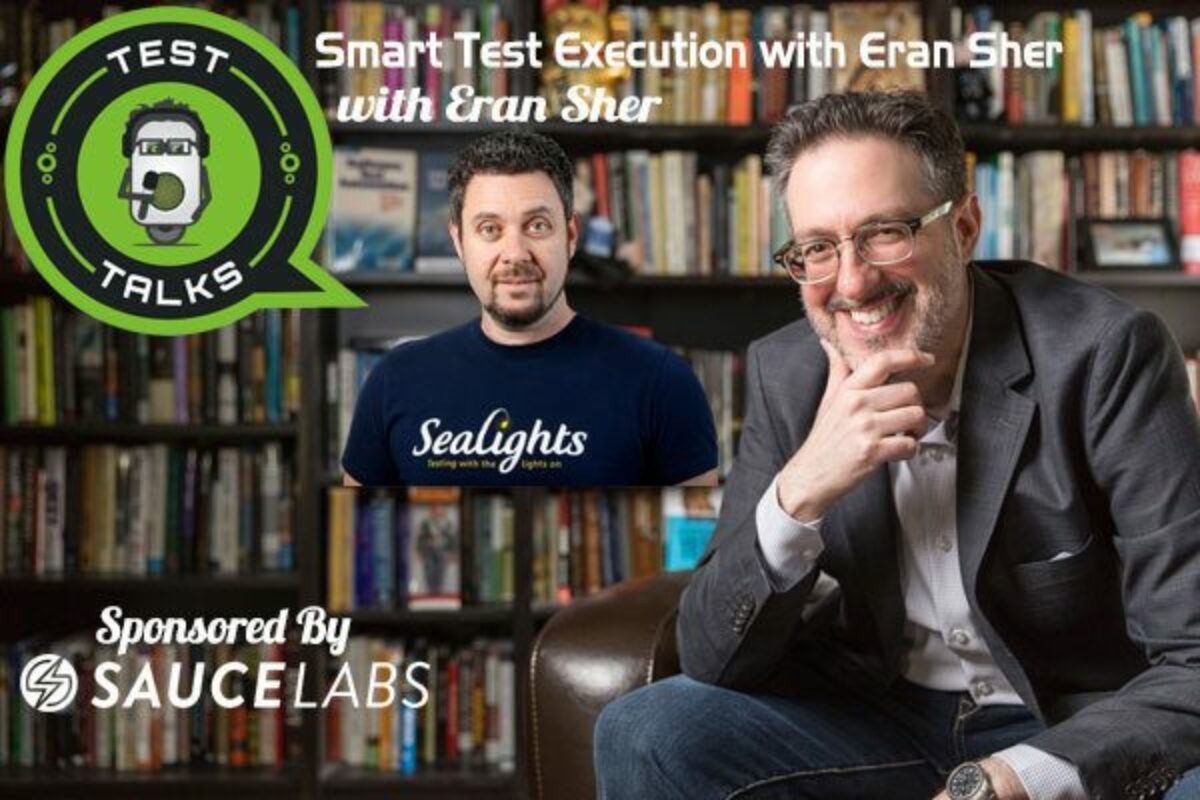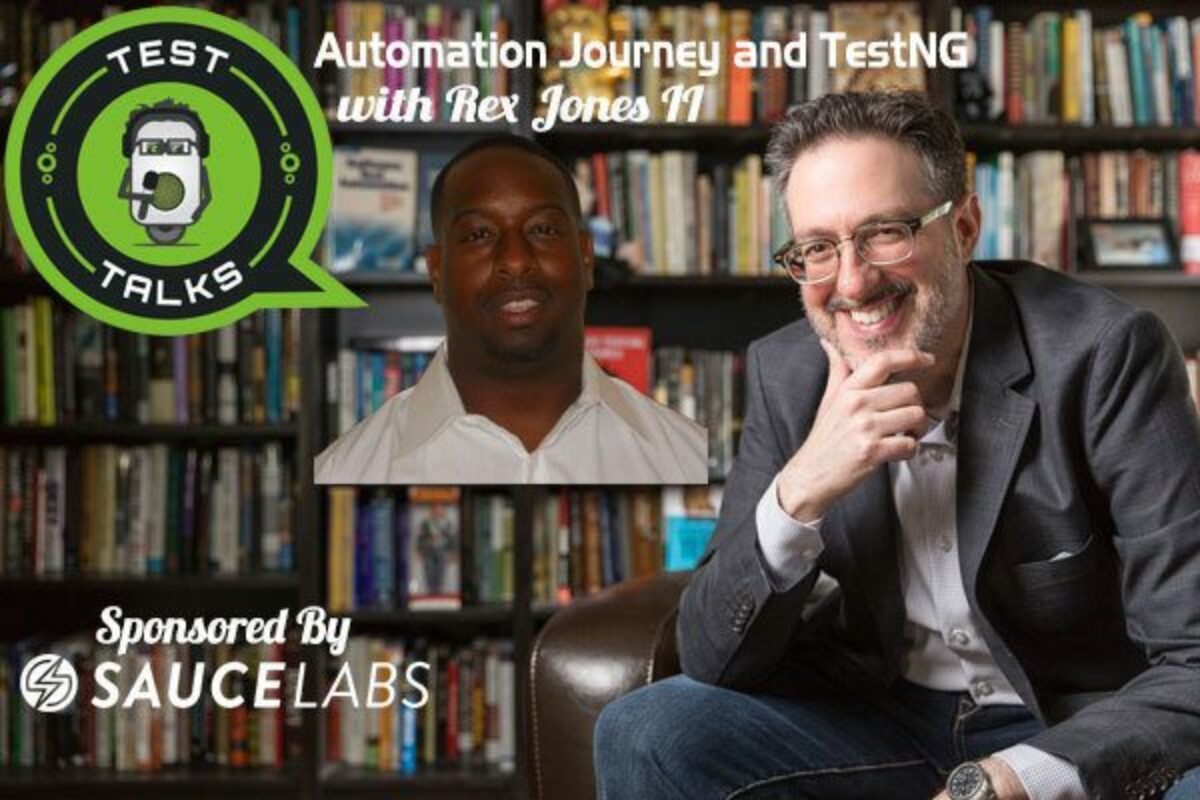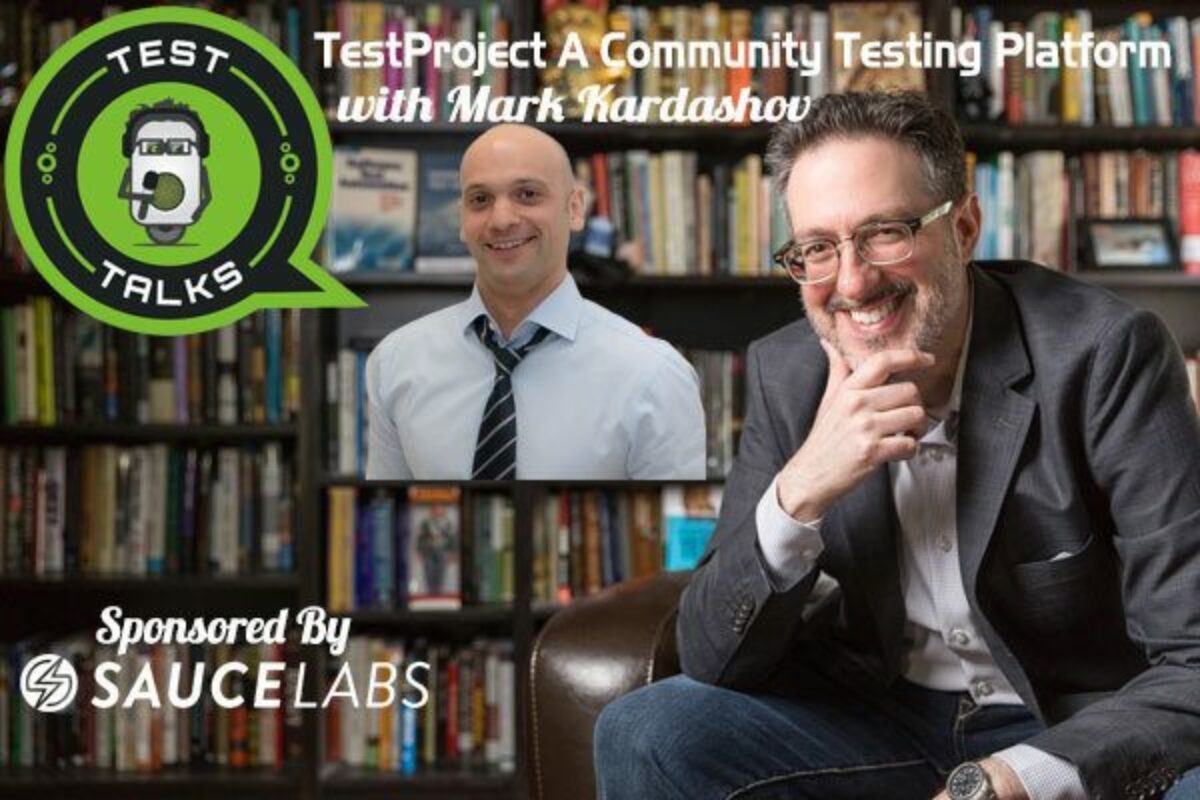Have you ever wondered how companies like The Huffington Post and Twitter use test automation?
Well then, you’re in for a treat with today’s episode as we test talk with Anil Kadimisetty about the tips and tricks he has used working at both companies as an automation architect. He’ll covers a range of topics including distributing load testing, visual validation testing, how to scale up automation teams and much more.
Don’t miss this episode if you want to discover some of the real-world automation techniques that top companies use to succeed with test automation.
About Anil Kadimisetty

Anil is the Lead Quality Engineering at Twitter and a recent MBA grad from NYU Stern School of Business previously. Anil also has worked at Vine and as Head of the Test Engineering Team at The Huffington Post.
Quotes & Insights from this Test Talk
- First of all, I think in ramping up, even before I explain that, in ramping up any test automator has one rule. That one rule everyone should remember is “we probably wouldn't get it right the first time, and it's okay.” That's one thing I learned. That's the most important thing I learned. It's okay if you don't get it right the first time; you can take another stab. So going back to my story, before I built up the team, what I did before Huffington Post, I was doing a lot of Selenium and WebDriver. I started as Selenium and WebDriver frameworks with Java, and then slowly trained everyone who was there using this framework. When the time came that I really had to scale it up, super scale, add a lot more hands on it, I figured that the Java Selenium way is probably better for the seasoned Java developer; otherwise, it's very hard because if someone barely knows anything about automation, nothing to do with QA, it's really hard to scale them up. Eventually, I went with a different framework, with the help of my other colleagues. We use Capybara Ruby, and then we basically had a class. We ran a class with a bunch of interns and new hires, fresh college grads. Because, for me, at least, hiring and scaling up a team at Huffington Post was very tough – we had a lot of requirements, but not so many people applying. Somehow we couldn't find people. So, I went for fresh college grads, and we had fellowships. I used to get them via fellowship for six weeks at a time, or eight weeks, where the fresh grads were. After six to eight weeks, depending on how they performed, I'd extend the fellowship or convert them to full-time. It was pretty much all hands-on. Me and my other colleagues were training everyone how to use a framework, how to write Ruby, how to think like test automation or think like a QA, how to use various frameworks.That's pretty much our world.
- Yes. I spent a lot of my personal time at Huffington Post doing a lot of load testing. We have people who use JMeter a lot, which I still think is a good tool; people can easily record traffic and play it back, and do this with load testing, and all those things in JMeter. At Twitter, we use something called Iago, which is actually open-source. That's a great tool because it's really efficient.
- Right now, at Twitter, we don't do that yet. At least the Twitter QA department doesn't do that. That's one of my next things, to hook up with Applitools and use it. I'm a big proponent and big, of a small visual pinnacle – I've been doing that since 2007. A while ago, I handled my own comparison, then I started using Sikuli, but then Applitools came around. They were pretty good, so I just used them at Huffington Post. At Vine, I used to use them to verify whether that player is actually playing videos. My next plan is to use it inside the Twitter QA department for verifying everything they see. That's on the top of my to-do list. Once I figure out if I want to stick with that, then I'll try something else.
- Before I worked at Huffington Post, I ran my own grid for almost two years. That was okay, but when I came to Huffington Post, I realized I can't do that, because it's a much larger scale, we have to run so many more tests, and I can't maintain all this grid. It just takes up all my time.
- People over-engineer a lot; you should just do it. A couple of days is okay, if anything you want to start, one day, two days' research at max. Other than that you're just wasting time.
- Another thing, going into maintainability – I've seen this in some people who gave code to me. If to run your test automation, if there are ten steps how to do this, then you get it wrong. It should be “git clone, name, and run,” or whatever. If you're not doing that, you have something, somewhere wrong.
Resources
- Visual Validation using Applitools
- Jmeter
Connect with Anil Kadimisetty
- Twitter:@anilkadimisetty
- LinkedIn: https://www.linkedin.com/in/anilkadimisetty
May I Ask You For a Favor?
Thanks again for listening to the show. If it has helped you in any way, shape or form, please share it using the social media buttons you see on the page.
Additionally, reviews for the podcast on iTunes are extremely helpful and greatly appreciated! They do matter in the rankings of the show and I read each and every one of them.

Test Talks is sponsored by the fantastic folks at Sauce Labs. Try it for free today!





Good content but I had a really hard time understanding what that guy was saying. As a non native speaker I make an effort to soften my accent when I talk about work so people can have a easier time understanding me. I suggest Anil to do the same.